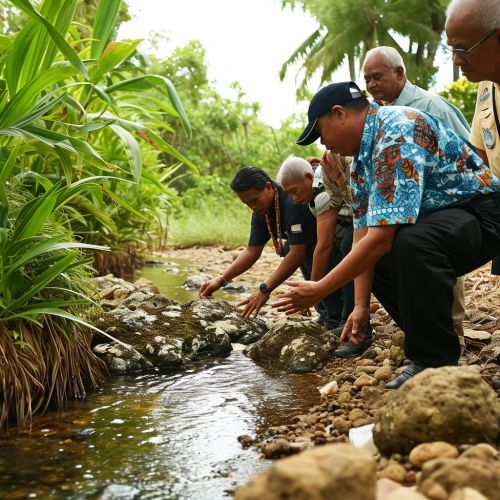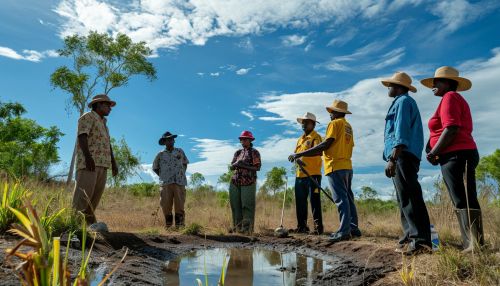Co-management
Introduction
Co-management, also known as joint management, is a practice where responsibility for resource management is shared between the government and local communities. This approach to management is often used in the context of natural resources, such as fisheries, wildlife, and forests. Co-management is seen as a way to balance the needs and interests of different stakeholders, while also ensuring the sustainable use of resources.


Concept and Principles
The concept of co-management emerged in the late 20th century as a response to the perceived failures of top-down, state-led resource management. It is based on the idea that the people who are most directly affected by resource management decisions – often local communities who depend on the resources for their livelihoods – should have a say in those decisions. This is in contrast to traditional management approaches, where decisions are made by distant bureaucrats with little understanding of local conditions or needs.
Co-management is underpinned by several key principles. These include:
- Shared responsibility: Both the government and local communities have roles to play in managing resources. The specific roles and responsibilities of each party are usually defined in a co-management agreement.
- Participation: All relevant stakeholders should be involved in decision-making processes. This includes not only the government and local communities, but also other interested parties, such as NGOs, industry representatives, and scientists.
- Equity: The benefits and costs of resource management should be distributed fairly among all stakeholders.
- Sustainability: Resource management should aim to ensure the long-term viability of the resource base.
Types of Co-management
There are several different types of co-management, which can be categorized according to the degree of power and responsibility that is shared between the government and local communities. These include:
- Consultative co-management: The government makes the final decisions, but consults with local communities before doing so.
- Cooperative co-management: The government and local communities make decisions together, with neither party having the final say.
- Delegated co-management: The government delegates some of its decision-making power to local communities.
- Community-based co-management: Local communities have the primary responsibility for making decisions, but the government retains some oversight.


Benefits and Challenges
Co-management has several potential benefits. Firstly, it can lead to better resource management outcomes, as decisions are based on a wider range of knowledge and perspectives. Secondly, it can enhance the legitimacy of management decisions, as they are seen to be the result of a fair and inclusive process. Thirdly, it can empower local communities by giving them a greater say in decisions that affect their lives.
However, co-management also faces several challenges. These include:
- Power imbalances: In many cases, the government and local communities have unequal power, which can lead to the domination of one party over the other.
- Conflicting interests: Different stakeholders may have different goals and priorities, which can make it difficult to reach consensus.
- Capacity constraints: Local communities may lack the skills, knowledge, or resources to effectively participate in co-management.
- Institutional barriers: Existing laws, policies, or institutions may not support the practice of co-management.
Case Studies
Co-management has been applied in a variety of contexts around the world. Here are a few examples:
- The Great Barrier Reef Marine Park in Australia: The management of this marine park is shared between the Australian government and the Traditional Owners of the reef, who are represented by various Aboriginal and Torres Strait Islander groups. This co-management arrangement is based on a recognition of the Traditional Owners' rights, interests, and deep connection to the reef.
- The Inuvialuit Settlement Region in Canada: The Inuvialuit, an Inuit group in the Canadian Arctic, co-manage the wildlife resources in their traditional territory together with the federal and territorial governments. This co-management arrangement is part of a comprehensive land claim agreement that was signed in 1984.
- The Sundarbans in Bangladesh: The world's largest mangrove forest is co-managed by the government and local communities, with support from NGOs. This co-management arrangement aims to balance the need for conservation with the livelihood needs of the local communities.


Conclusion
Co-management represents a shift away from top-down, state-led resource management towards a more inclusive and participatory approach. While it is not without its challenges, it offers a promising way to balance the needs and interests of different stakeholders, while also ensuring the sustainable use of resources. As such, it is likely to continue to be an important tool for resource management in the 21st century.
